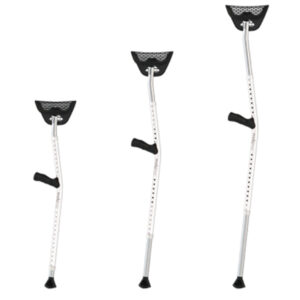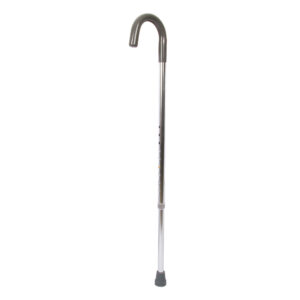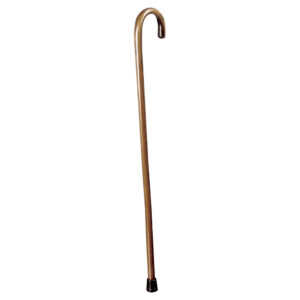Canes
Frequently Asked Questions
What type of cane is best for my needs?
Choosing the right cane depends on your specific mobility requirements. Standard canes provide basic support, while quad canes offer increased stability. Forearm crutches are suitable for those who need more upper body support, and offset canes cater to individuals with wrist or hand issues. Your physical therapist can assess your condition and recommend the most appropriate type of cane to enhance your stability and comfort during mobility.
How do I determine the correct cane height for optimal use?
Ensuring the proper height of your cane is crucial for maintaining an upright posture and preventing strain. To determine the ideal height, stand upright with your arms at your sides. The top of the cane should align with your wrist crease. If you’re unsure, seek guidance from your physical therapist, who can assess your individual needs and provide personalized recommendations. Adjusting the cane to the correct height promotes better weight distribution and minimizes the risk of discomfort or musculoskeletal issues during use.
Can I use a cane on stairs or uneven surfaces?
Yes, canes are designed to enhance stability on various terrains. However, using a cane on stairs requires proper technique. When ascending, lead with your stronger leg and bring the cane up afterward. Conversely, when descending, place the cane on the lower step first, followed by your weaker leg. On uneven surfaces, maintain a cautious and deliberate pace. If you have concerns about using your cane in specific environments, consult with your physical therapist for guidance on adapting your mobility techniques.
How do I maintain and care for my cane?
Regular maintenance ensures the longevity and reliability of your cane. Inspect it regularly for any signs of wear or damage, paying attention to the grip, shaft, and rubber tip. Clean your cane with a mild soap and water solution, avoiding harsh chemicals that may compromise the materials. If your cane has adjustable features, periodically check and tighten them as needed. Replace the rubber tip when it shows signs of wear to maintain optimal traction. Following these care practices will help extend the life of your cane and contribute to its continued effectiveness as a mobility aid.




